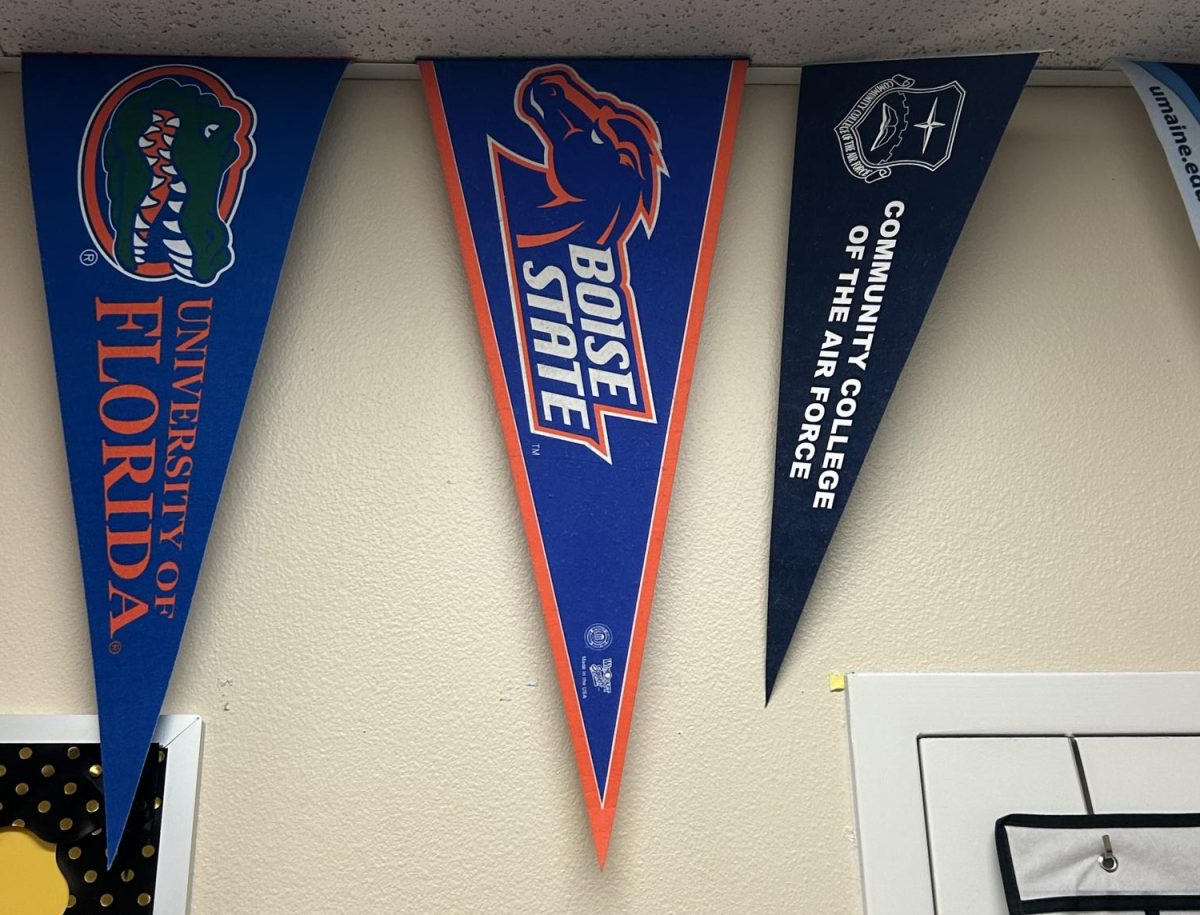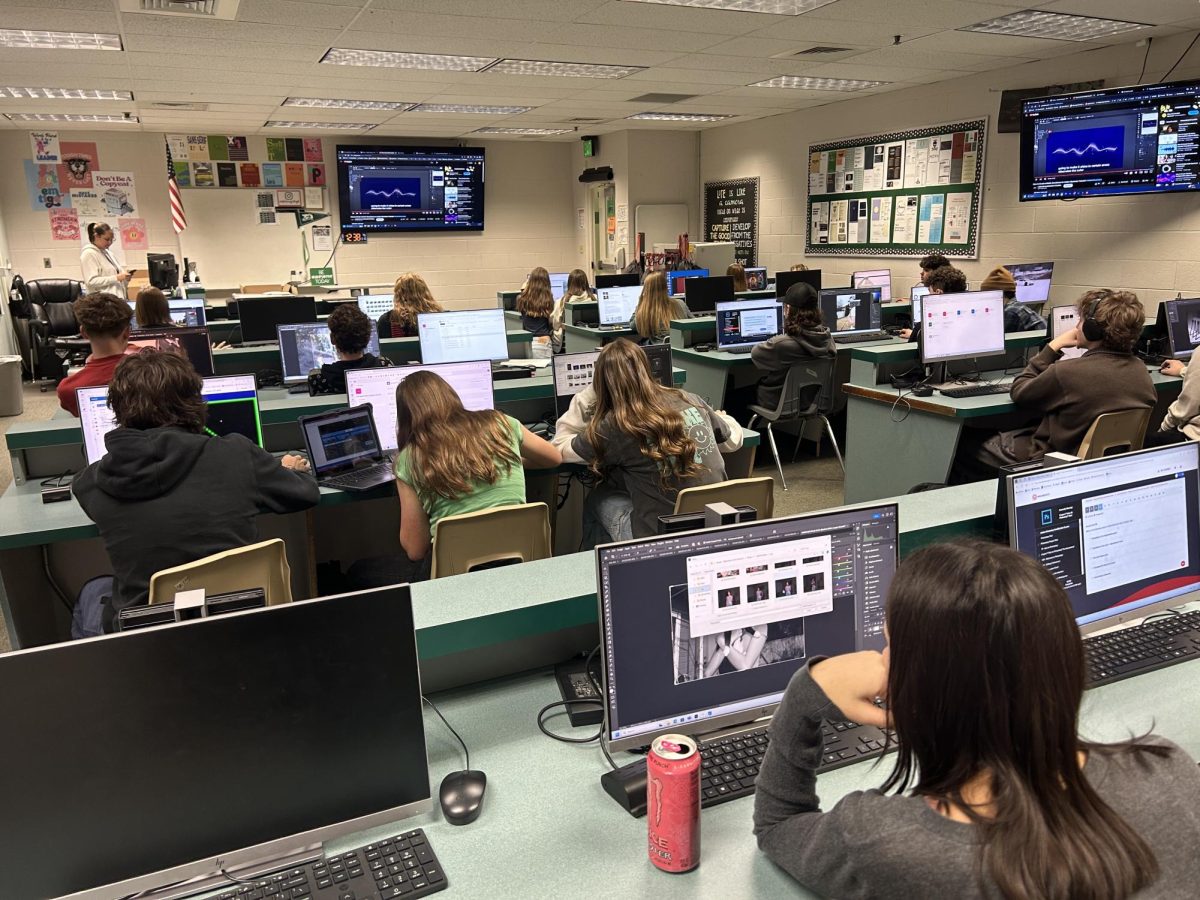Standardized testing season is right around the corner
Eagle High students can use these tips to help them prepare for college-entrance exams
Many students in high school spend their junior year preparing for SAT/ACT testing.
Mar 15, 2023
As Eagle High moves into spring, the end of the year, along with the many exciting events that accompany it, creep within reach. From Spring Break to prom to graduation ceremonies and celebrations, the months from March to June fill up quickly for students. But, for many Eagle High juniors, a different anticipation looms on the horizon. With spring also comes standardized college entrance exams like the SAT and ACT, which have many students scrambling to sign up, read prep books upon prep books and take as many tests as necessary to achieve their dream scores.
The SAT, created and run by the CollegeBoard organization, and the ACT, created and run by the ACT organization, are very similar in structure and overall feel. Both take approximately three hours to complete. Both test students on a variety of skills to demonstrate college preparedness. Both are split up into four sections; the SAT features a reading section, writing section and two separate math sections, while the ACT features a reading section, writing section, math section and science section. Both generally come with a registration fee of about $60, which can be waived through an application process if a student faces financial hardship.
While the purpose of these tests is largely changing, as many universities are now transitioning into test-optional policies (wherein applicants may choose whether they’d like their SAT/ACT scores considered as part of their admission application), they are still significant in the lives of many students. Highly competitive schools like Harvard, Yale, Stanford, UCLA and USC may be test-optional in policy, but having an extremely strong score on either of these tests may give students an extra edge in a pool of highly competitive applicants.
In other cases, high SAT and ACT scores may result in better financial opportunities, as many universities use scores as the basis for merit-based financial aid and scholarship awards. This could be a make-or-break factor in the college decision process for many students.
“I really push myself to get a good score on the SAT and ACT because I am wanting to get into MIT, but even if you are not wanting to get into a school like that, good SAT scores help you get money in scholarships…,” said junior Cole Yearsley, who has already taken the SAT and ACT and is planning on taking the SAT again in April. “…Good scores also let you get into the school that will allow you to reach your full potential and give you the greatest education for yourself.”
That being said, how does one prepare for such important tests?
Above all else, it is crucial that students start early. Nothing obstructs the preparation process more than procrastination, as there are many unique aspects to these tests that take great time and dedication to master.
According to collegeboard.org, the organization that makes the SAT and administers it to students, it is important for test-takers to “…build a study plan to make the most of your time before the test. Set aside specific times to practice, watch instructional videos, and focus on the areas you need work on. Set concrete, manageable goals.”
Once a study plan is set into place, students can set a target score – one that lines up with their college goals and future aspirations. Using online tools like the CollegeBoard’s “BigFuture” application, students can quickly connect with their dream colleges and figure out what scores are common of the admitted students at that school. Having a clear and defined target score allows for test-takers to measure their strengths, weaknesses and opportunities for improvement, especially if they plan to retake these tests on multiple occasions.
In addition, there are many resources available to students planning on taking these tests. Khan Academy, a non-profit educational organization that offers a variety of free online courses, has free SAT prep tools on its website featuring videos, reading materials and interactive practices.
“A great study tool that I used for the SAT is Khan Academy. I would go through and do the mini-lessons they have, then once or twice a week take a practice test,” Yearsley said.
As for the ACT, the official act.org website offers a variety of free online studying materials and practices. Since it comes directly from the organization that creates the test, the content is very representative of real tests. There are also physical SAT and ACT prep books and study materials available for purchase through many online sites.
“Before the SAT, I read [the black SAT prep book] and it boosted my score by 150 points, so I would definitely recommend [it],” said senior Hannah Pease, whose high SAT score helped her to be competitive in the applicant pools of many prestigious universities. “My advice for people taking [college-entrance exams] is to prepare as much as you can way ahead of time and then don’t do any studying for two days before. It sounds weird but it almost like reset my mind before I tested.”
The day of testing, students should make sure they are well-rested, eat a nutritious and energizing breakfast, choose comfortable clothes and ensure they have all of the right supplies, such as pencils, a calculator, their entrance ticket, water and snacks. Some might find it beneficial to get in some morning exercise before the exam to get their blood flowing, or possibly read passages from a book to get their “brain gears” turning.
But most importantly, test-takers should not stress themselves out; it is crucial to stay in a calm, focused headspace before and throughout the duration of the exam. When one is well-prepared, organized and motivated, they can put their best foot forward on these tests and pave the way for a bright future.










































































